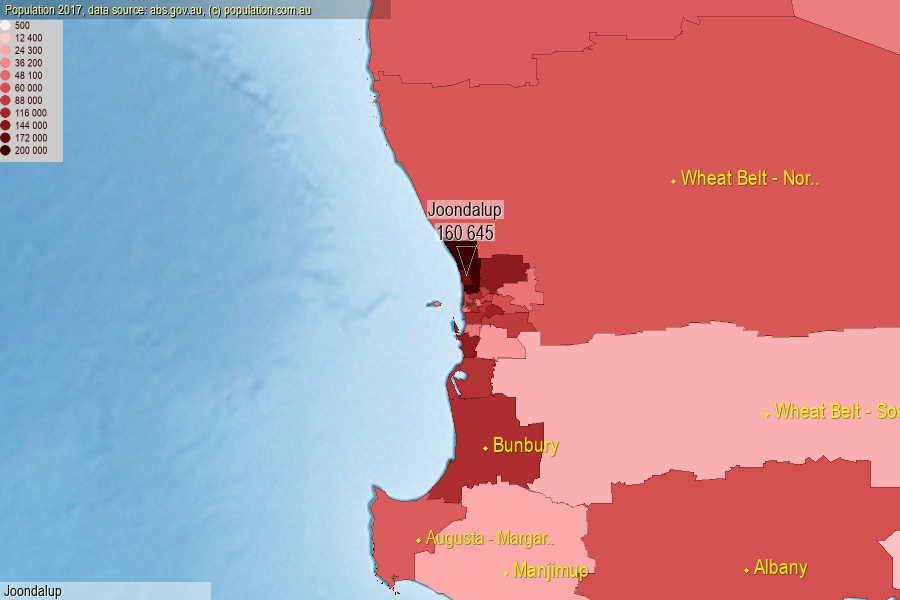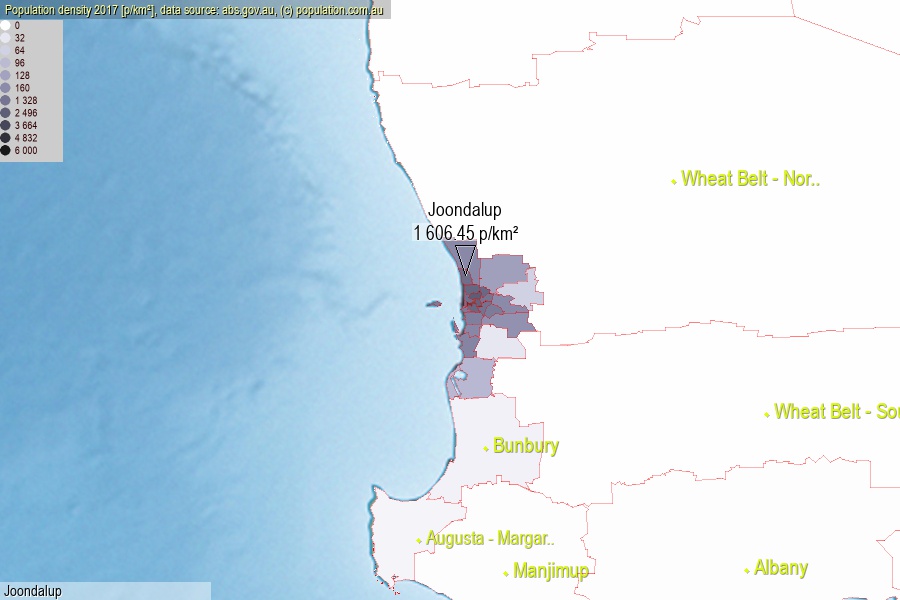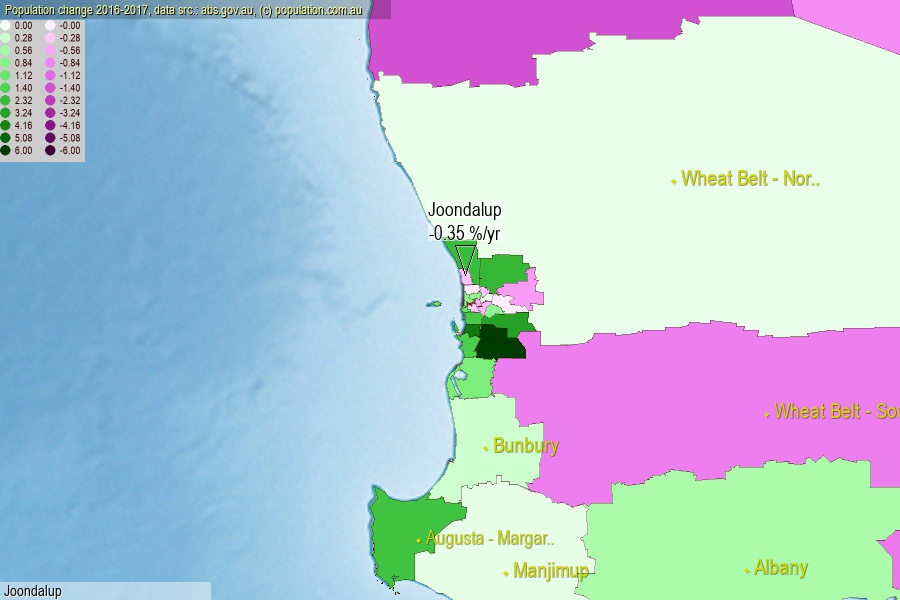 population.com.au
population.com.auLast official estimated population of Joondalup (as Statistical Area Level 3) was 160 645 people (on 2017-06-30)[2]. This was 0.65% of total Australian population and 6.198% of WA population. Area of Joondalup is 100.00 km², in this year population density was 1 606.45 p/km² . If population growth rate would be same as in period 2016-2017 (-0.35%/yr), Joondalup population in 2025 would be 156 203. [0]



Click to enlarge. Joondalup is located in the center of the images.
Population [people], population density [p./km²] and population change [%/year] [2]
View borders » (new window) [4]
[1991-1992] +2.83 %/Y
[1992-1993] +3.08 %/Y
[1993-1994] +3.35 %/Y
[1994-1995] +3.14 %/Y
[1995-1996] +1.94 %/Y
[1996-1997] +1.36 %/Y
[1997-1998] +1.82 %/Y
[1998-1999] +0.82 %/Y
[1999-2000] +0.46 %/Y
[2000-2001] +0.93 %/Y
[2001-2002] +0.26 %/Y
[2002-2003] +0.16 %/Y
[2003-2004] +0.10 %/Y
[2004-2005] -0.49 %/Y
[2005-2006] +0.07 %/Y
[2006-2007] +0.42 %/Y
[2007-2008] +0.60 %/Y
[2008-2009] +0.62 %/Y
[2009-2010] +0.56 %/Y
[2010-2011] +1.34 %/Y
[2011-2012] +0.89 %/Y
[2012-2013] +0.54 %/Y
[2013-2014] -0.28 %/Y
[2014-2015] -0.57 %/Y
[2015-2016] -1.18 %/Y
[2016-2017] -0.35 %/Y
[0] Calculated with linear interpolation from officially estimated population
[1] Read more about SA3 and Australian Statistical Geography Standard (ASGS) on abs.gov.au
[2] Population data from Australian Bureau of Statistics (Population and density: 2017; change: 2016-2017)
[3] Digital Boundaries: Australian Statistical Geography Standard (ASGS) 2016.
[4] Border coordinates are simplifyed using Ramer-Douglas-Peucker algorithm.